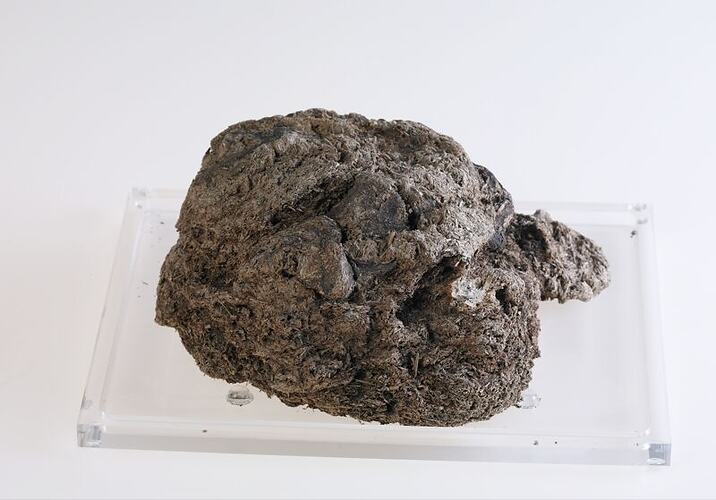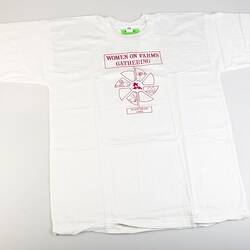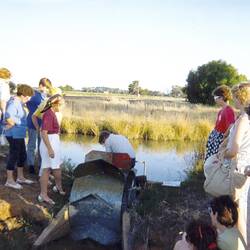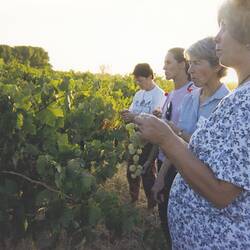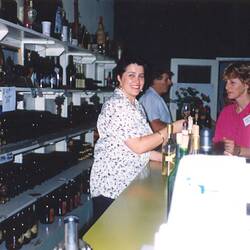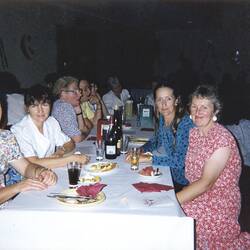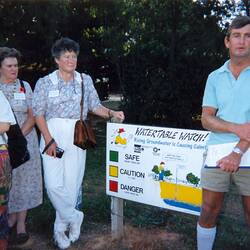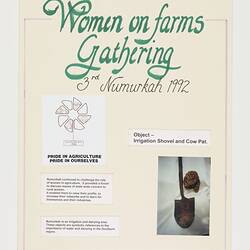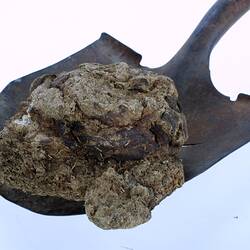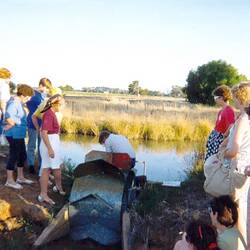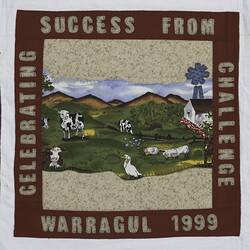Summary
Icon created for and displayed at the Women on Farms Gathering, Numurkah 1992.
The organising committee for Numurkah selected an irrigation shovel as the icon for their Gathering to symbolize the importance of water and dairying in the Goulburn Region. A cowpat was added in response to the speech by the Minister of Agriculture who said that the women had to decide whether they were going to be farmers or feminists, they couldn't be both.
'We had already organised the cow pat, but when the then Minister for Agriculture, Ian Baker (ALP) made his speech on the Saturday morning, it seemed all the more relevant. He said we had to decide whether we were going to be farmers or feminists. We couldn't be both. Like the Madonna/Whore syndrome! For the most part he waffled on in a mildly pleasant manner but that statement stuck with us and when we handed over the shovel and cow pat, we said "and this is in relation to Ian Baker's speech." What was interesting was that what he was saying - that we either focused on agriculture or advancing women's issues - was prophetic. It crystallised what the general rural women's movement was up against as it grew and grew in the next few years. It was the issue that women constantly butted their heads against, "are you farmers, or are you feminists?" Quote from Sharon O'Brien, member of the Numurkah Gathering Organising Committee.
The closing of each Gathering and the anticipation of the next is celebrated with a formal 'baton changing' ritual, where a symbolic 'icon' is handed over from one organising committee to the next. Each item represents a story or message of some of the key themes and issues, which have shaped the meaning and experience of these women's rural identity.
Part of Museums Victoria's Invisible Farmer Project Collection. The Invisible Farmer Project was the largest ever study of Australian women on the land, uncovering the histories and stories of Australian women in agriculture and addressing the absence of rural women in mainstream histories and museums. It began as a pilot project (2015-2016) and evolved into a three year (2017-2020) nation-wide partnership between rural communities, academic, government and cultural organisations, funded by the Australian Research Council.
More Information
-
Collection Names
-
Collecting Areas
-
Acquisition Information
Loan & Subsequent Donation from Victorian Women on Farms Gathering, Mrs. Rhonda Diffey - Women on Farms Gathering Heritage Group, 20 Nov 2002
-
Commissioned By
Victorian Women on Farms Gathering, Numurkah, Victoria, Australia, 1992
-
Commissioned By
Sharon O'Brien - Numurkah Women on Farms Gathering Organising Committee, 1992
-
Person Named
Mr Ian Baker, Numurkah, Victoria, Australia, 1992
It was in response to comments by Ian Baker, the then Minister for Agriculture, that the cow pat was presented in addition to the Numurkah icon, the irrigation shovel. -
Classification
Agriculture & rural life, Community activity - women on farms gathering, Symbolic objects
-
Category
-
Discipline
-
Type of item
-
Overall Dimensions
215 mm (Length), 180 mm (Width), 100 mm (Height)
-
Maximum dimensions
215 mm (Length), 180 mm (Width), 100 mm (Height)
Measurement From Conservation.
-
References
[Link 1] viewed 12.05.2008 LDH [Link 2] viewed 12.05.2008 LDH
[Chapter] Dale-Hallett, Liza, et al. "Rural women reclaiming their place through symbols, stories and rituals"., 2008
[Article] Dale-Hallett, Liza & Diffey, Rhonda. 2006. "Motherboards and desert sands: stories of Australian rural women" Frontiers: A Journal of Women's Studies., 2006
[Article] Dale-Hallett, Liza, et al. 2006. "Creating collaborative living history; the case of the Victorian Women on Farms Gathering Heritage Collection", History Australia., 2006
-
Keywords
Agriculture, Gender Issues, Globalisation, Politics, Rural Life, Work
